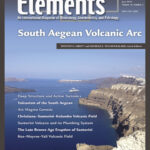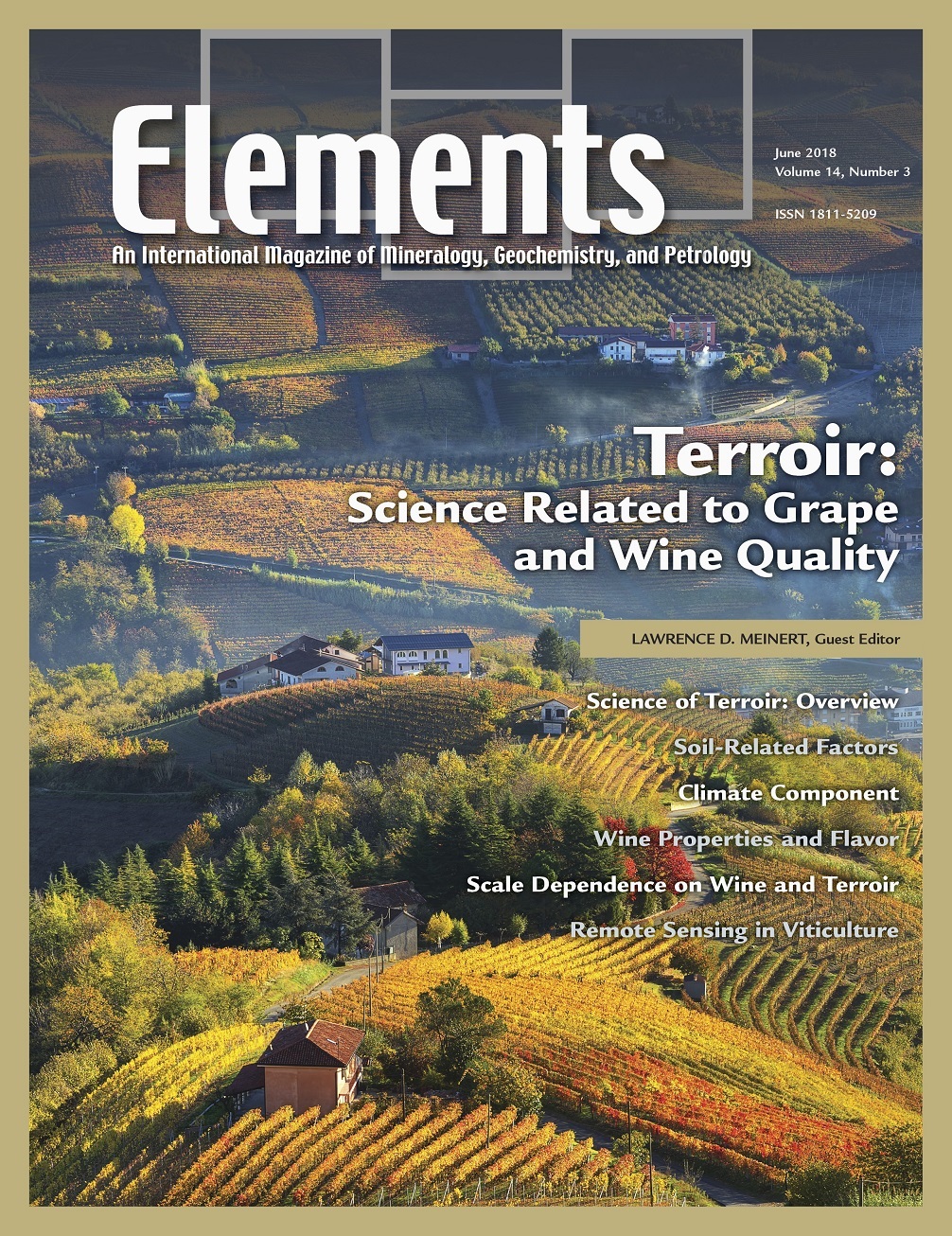
Boron: Light And Lively, August 2017, Vol. 13, No. 4
June 28, 2024
South Aegean Volcanic Arc, June 2019, Vol. 15, No. 3
June 28, 2024Terroir – Science Related To Grape And Wine Quality, June 2018, Vol. 14, No. 3
$20.00
This special issue explores the physical environment that shapes the character and quality of wine, ranging from geology and soils to viticulture and climate. It also discusses some of the technological advances such as drones, remote sensing, and precision agriculture, that are revolutionizing the production of fine wine.
Terroir – Science Related To Grape And Wine Quality
June 2018, Vol. 14, No. 3
This special issue explores the physical environment that shapes the character and quality of wine, ranging from geology and soils to viticulture and climate. It also discusses some of the technological advances such as drones, remote sensing, and precision agriculture, that are revolutionizing the production of fine wine. The French have a word for all aspects of the wine environment, terroir, and this special issue of Elements explains to a general audience the modern understanding of terroir. It is common, although usually incorrect, to point to a single factor as the explanation: “It’s the soil.” “It’s the water.” “It’s the limestone.” Terroir is the integration of all individual factors that contribute to wine quality, and this is appropriately summarized by the phrase “in vino veritas”.
Why You’ll Love Elements Magazine:
- Expert Contributors: Articles written by renowned researchers in the field of geoscience.
- Engaging Content: Join a community of readers who are passionate about Elements.
- Exceptional Quality: Each issue is printed on high-quality paper with stunning visuals and detailed illustrations that bring complex scientific concepts to life.
Order your copy of the June 2018 issue of Elements magazine today and explore terroir – science related to grape and wine quality.
Related products
-
Carbon Dioxide Sequestration, October 2008, Vol. 4, No. 5
$20.00Storage of carbon in the subsurface involves introduction of supercritical CO2 into rock formations beneath the surface of the Earth, typically at depths of 1000 to 4000 meters. Although CO2 is a relatively benign substance, the volume being considered is large.
-
Fluids in Planetary Systems, January 2005, Vol. 1, No. 1
$20.00Water and other geofluids play an important role in the geochemical and rheological evolution of the Earth and other bodies in the solar system. These fluids are responsible for the formation of hydrothermal mineral deposits, affect eruption behavior in volcanic systems and the geophysical properties of the mantle, and significantly affect the way in which rocks deform and fracture.
-
Large Igneous Provinces: Origin And Environmental Consequences, December 2005, Vol. 1, No. 5
$20.00Large igneous provinces record major outpourings of igneous rocks, both on the continents and in ocean basins. Their origin is still vigorously disputed, with models invoking mantle plumes, thermal effects of the lithosphere, and meteorite impacts.




